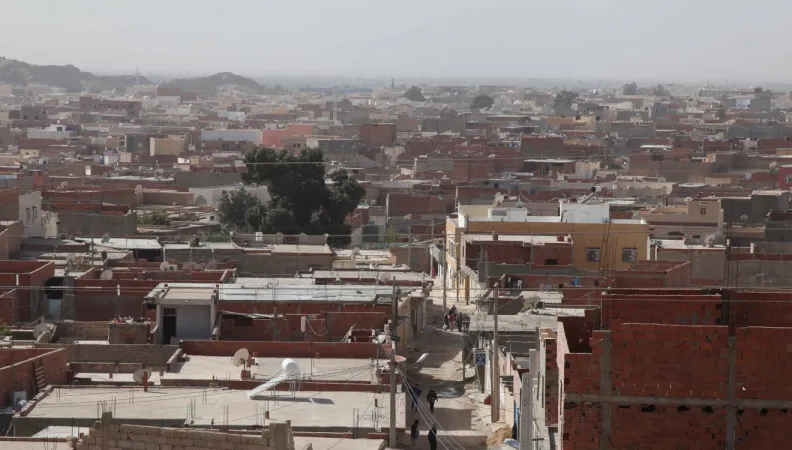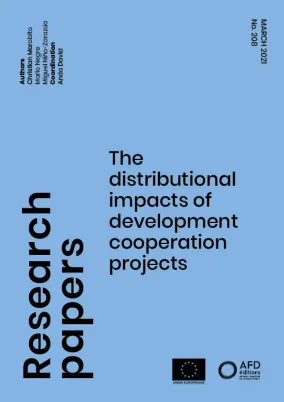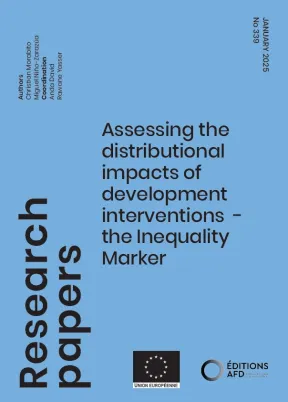Share the page
Analysis of the distributional impact of development cooperation projects

-
Project start date
-
2020Status
Ongoing
-
Project end date
-
2023
-
AFD financing amount
-
264 000
-
Partners
-
Research program
It is critical to assess how, and the extent to which, projects and programmes supported by development agencies contribute to the goal of reducing within country inequalities. A methodology (Morabito et al. 2021) proposes a set of analytical tools identifying potential distributional impacts of development programmes or projects by focusing on whether programmes’ beneficiaries belong to the bottom 40% of the wealth distribution through a mix of analytical tools.
Context
Addressing persistent inequalities in income and other dimensions of wellbeing is a key policy objective of the Sustainable Development Goal 10. Multilateral and bilateral donor agencies have been directing their efforts towards promoting good governance, human and economic development, fighting hunger and reducing inequality.
The increase in development funding towards inequality reduction is accompanied by a need to monitor progress on the SDG 10 but most importantly, by the need to evaluate the contribution of development towards achieving this goal. However, measuring the distributional impacts of development cooperation projects is a challenging task due to a myriad of factors, including the effects that domestic redistributive policies, the structure of labour markets and other factors, such as institutions, have on inequality. The methodology developed by Morabito et al. enables the analysis of the potential contributions of development projects on inequality by looking primarily at the extent to which they disproportionally benefit the most vulnerable through a mix of analytical tools (a scoreboard, a statistical analysis of development projects based on the Equity Tool, a fiscal incidence analysis).
This methodology has first been tested on three development projects funded by AFD in Cameroon, Colombia and Tunisia as part of the first phase of the Research Facility on Inequalities.
This project was part of the first phase of the Research Facility on Inequalities, coordinated by AFD and funded by the European Commission over the 2017-2020 period. The first phase of the Facility has led to the conduct of 22 research projects and the publication of around 100 research papers and policy briefs.
A second phase of the research project was launched in 2022 with the aim to extend the initial phase, to further test the validity of the methodology with respect to income and other forms of inequalities and to develop the guidelines for an inequality marker.
Objectives
The initial phase of the project aimed at piloting the application of the methodology developed by the researchers on three projects funded by the AFD:
- A programme supporting urban housing improvements in Tunisia;
- A programme focusing on capacity-building of Small- and Medium-Sized Enterprises in Cameroon;
- A budget support operation aimed at supporting a health sector reform in Colombia.
The objective was to test the methodology and evaluate the relevance of its results, and, based on these findings, to review and adjust the methodology itself.
The second phase of the project aimed:
- To develop the guidelines for an inequality marker for development cooperation;
- To further test the methodology on four AFD and EU development programmes: a programme promoting sustainable access to electricity for the unserved poor rural populations in Benin; a programme improving the health and living conditions of the inhabitants of the rural district of Isingiro (Uganda) and its refugee camps; a programme facilitating trade between Ethiopia and Djibouti and enabling businesses and producers, as well as the most vulnerable populations, to benefit from these improvements; and a programme contributing to the adaptation of the communities to climate change in Vietnam.
Method
The initial study identified whether programmes’ beneficiaries of the three selected interventions belonged to the Bottom 40% of the wealth distribution, through a mix of analytical tools:
- First, a scoreboard that assessed whether or not inequality reduction was a central objective of development programmes;
- Second, the Equity Tool, which helped assess the position of direct beneficiaries within the national (urban or rural) wealth distribution;
- Third, the Commitment for Equity Tool, which helped estimate the distributional impact of general or sectoral budget support.
The methodological steps of the second phase of the research project were the following:
- Refining and upgrading the inequality markers and the scoreboard to provide clear benchmarks and indicators, aligned with evaluation approaches used by the European Commission, to assess whether development interventions focus on the poorest bottom 40% individuals, households or vulnerable groups that are targeted by specific development policies;
- Extending the scope of the Equity Tool questionnaire to include questions that capture the distribution of projects beneficiaries among vulnerable groups (women, ethnic, religious minorities, etc.);
- Applying the revised methodology to the four case studies.
Results
Results of the first phase of the project
Overall, the results underscore the importance of considering a pro-poor targeting ex-ante when designing development cooperation interventions that explicitly (or implicitly) aim to contribute to the reduction of inequalities in partner countries. The main strength of the methodology is that it allows an assessment of the potential reach of interventions for the bottom 40 percent of the income distribution. Therefore, the information provided thanks to this methodology can be critical to fine-tune policies before they are implemented and maximize their redistributive impact.
You may find the research paper here: The distributional impacts of development cooperation projects
Results of the second phase of the project
The second phase of this project resulted in:
- The elaboration of guidelines for the implementation of the methodology, which were used to develop the European Commission's Inequality Marker. The I-Marker assesses whether, and to what extent, inequality reduction is an objective of development intervention. For this purpose, a set of criteria has been developed to establish if: - I-0: Inequality reduction is not targeted; - I-1: Inequality reduction is a significant objective; - I-2: Inequality reduction is the principal objective. The I-Marker focuses on the bottom (poorest) 40% or socio-economically disadvantaged individuals, households or groups. Watch the video on the Inequality Marker for more information.
- A report on the testing of the methodology on the four case studies : Assessing the distributional impacts of development interventions - the Inequality Marker
Research findings
This project highlighted the importance of identifying direct and indirect beneficiaries of the projects, but also, more broadly, of having a complete understanding of the development cooperation interventions, which are being analyzed, especially their objectives and conditionalities.
Equally important is the involvement of key stakeholders to communicate the objectives, scope and limitations of the studies. In some cases, the inclusion of a qualitative component in the form of interviews, consultations, or eventually field missions, may be required to ensure the successful implementation and completion of studies.



